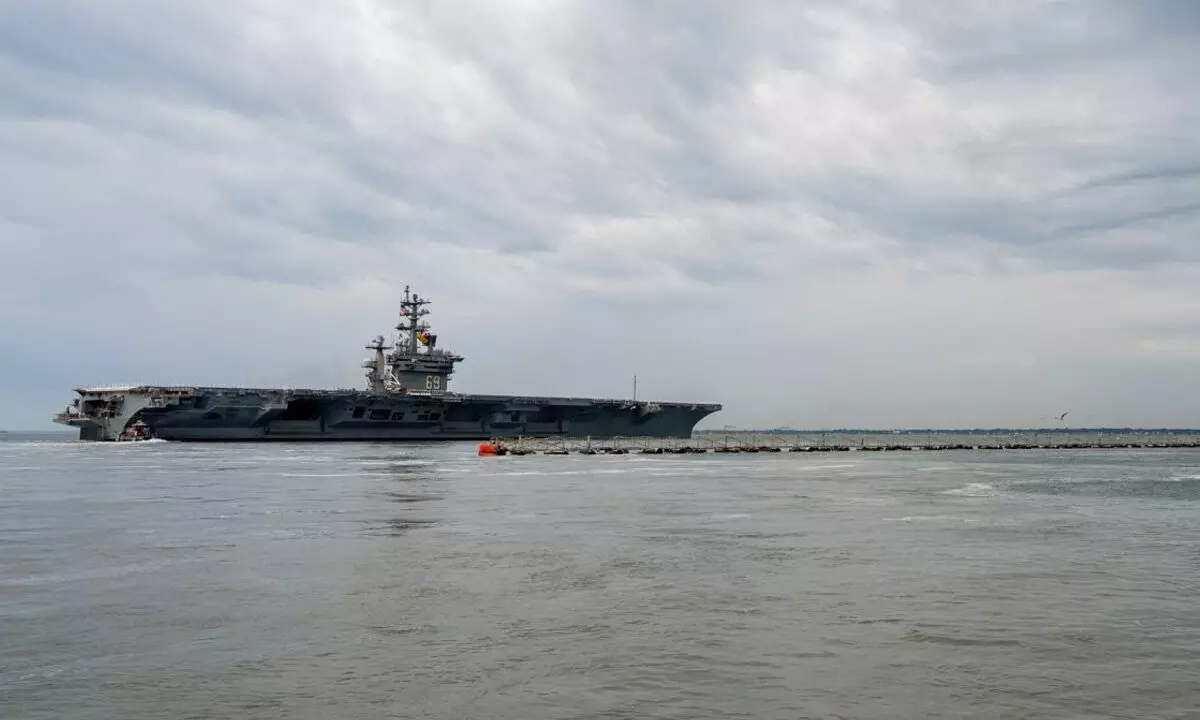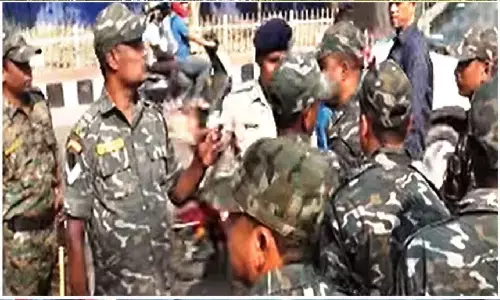US Deploys Second Aircraft Carrier To Te Middle East As A Strong Deterrent In Gaza Conflict

- The United States' strategic move of sending a second nuclear-powered aircraft carrier to the Middle East is a clear message of deterrence to Hamas supporters and aims to prevent the Gaza conflict from spreading across West Asia.
- This article explores the implications and motivations behind this military decision.
The United States has conveyed a potent message of deterrence by deploying a second nuclear-powered aircraft carrier to the Middle East, aimed at discouraging supporters of the Hamas terrorist group. This move is designed to prevent the Gaza conflict from spilling over into other regions of West Asia.
The USS Dwight Eisenhower, a nuclear-powered aircraft carrier, is leading the Carrier Strike Force 2 on its way to the Middle East, with a probable deployment in the Red Sea. Simultaneously, the USSGerald Ford is overseeing the East Mediterranean as Carrier Strike Force 12. Both of these formidable nuclear-powered carriers are accompanied by their complete complement of destroyers and submarines, armed with the military capability to handle land attack missiles and F-18 fighters, making them prepared to face any major power in the region.
The decision to dispatch the second aircraft carrier group to the Middle East serves as a warning to Iran and other allies of Hamas not to interfere with Israel's ground offensive against Hamas in Gaza and Hezbollah in Lebanon, both backed by Tehran. This action follows the attacks by Sunni jihadists in South Israel on October 7.
With President Joe Biden reaffirming the U.S. support for Israel in the aftermath of the reprehensible massacre by Hamas Islamists in South Israel, Tel Aviv can now focus its efforts on the impending land offensive against Hamas in the Gaza Strip. This move is also intended to discourage Shia Hezbollah from approaching the northern borders of Israel. Despite Iran's threatening rhetoric after meeting with Hamas leadership in Lebanon and Qatar, Tehran is cautious about sparking a full-scale conflict, as the mood among Israelis is focused on avenging the recent violence by Hamas terrorists.
The Israeli Defense Force is contemplating a land offensive in North Gaza, which presents several challenges and risks. Hamas is holding over 120 hostages, including infants and toddlers, as a deterrent against such an offensive, threatening to harm them in the event of an attack. The IDF must also address the issues of mined roads with IEDs and anti-tank mines, as well as the possibility of guided missile attacks on Israeli armor. Moreover, engaging in urban guerrilla warfare could result in more Israeli casualties. Aerial attacks using air-to-ground missiles carry the risk of collateral damage, particularly since Hamas is known to use women and children as pawns in their fight against Israel.
Additionally, Gazans have limited options for refuge, as Egypt has sealed the Rafah crossing in South Gaza, and other Muslim nations are unwilling to house displaced Gazans. In light of these challenges, any Israeli land offensive will be methodical, focusing on eliminating the Hamas command and control network in Gaza before achieving victory, with no quick end to the conflict in sight.




















